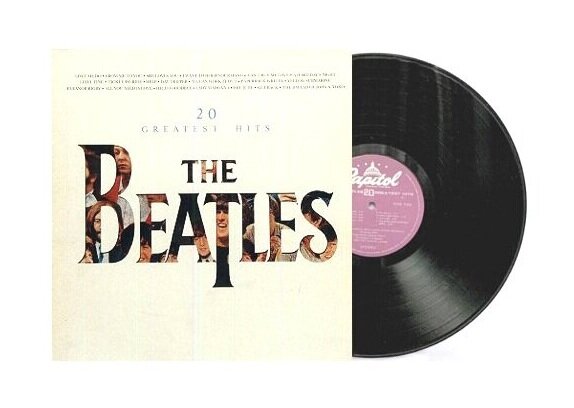Beatles Album
Capitol Records Inc., 1982
Polyvinyl chloride
30 cm diameter
Originally owned by Leila Persaud
Personal collection
The twelve-inch long-playing (LP) phonograph disc was developed by Hungarian engineer, Peter Carl Goldmark, and introduced in 1948 by Goddard Lieberson, president of Columbia Records at the time. The phonograph record was the standard for incorporating lengthy recordings onto a single disc for generations, and served as the primary channel through which music was reproduced throughout the twentieth century. Records held the largest market share even after new media were created, such as the cassette tape introduced in 1963. While vinyl records continue to be manufactured and sold today, the old and out-of-print recordings are in high demand, sought out by collectors around the world.
This particular record of The Beatles brings together twenty greatest hits that they composed between the years of 1962 and 1970. It was purchased by my grandmother in the early eighties and remained part of her record collection until she passed it on to me in 2014 when I came to appreciate music by The Beatles. Their genre of music evoked a feeling of individuality and exceptionality, as I did not know many other 14 year olds who listened to music of this era. I value this record and my admiration for The Beatles persists today.
This album may be loosely associated with the concept of “memory space”, a term coined by French historian Pierre Nora, to describe how certain places, objects or events can have a special significance related to a group’s remembrance. Collectively, a generation of music listeners grew up with the Beatles, and audiophiles and record collectors view the record as a tribute to the members of the band who have since passed. Music in general can often bring groups of individuals with similar taste together, and thus reflects an opportunity for virtual unity which is particularly important at this time of separation.
The global phenomenon of listening to music will live on regardless of the form it comes in. For example, my grandparents listened to The Beatles’ album on a record player, whereas I listen to their classics through my wireless headphones. Given that records were the way music was listened to for decades, the phonograph disc spurred the change that would follow and is thus symbolic of the future of how music will eventually be globally conveyed.
Anjali Roychaudhuri
